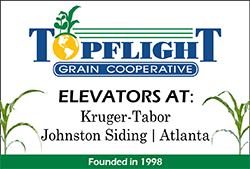|
 The
origins of 4-H can be traced back to 1862 with the Morrill Act which
established land-grant universities that conducted agricultural
research. However, these schools had a tough time sharing their
findings with the local farmers who were typically unwilling to
adapt to changes or ideas of teaching children. However, in 1902 A.B.
Graham started the first 4-H club in Clark County, Ohio and he
called it ‘The Tomato Club’ because the focus was on one single
topic, you guessed growing and harvesting tomatoes. The
origins of 4-H can be traced back to 1862 with the Morrill Act which
established land-grant universities that conducted agricultural
research. However, these schools had a tough time sharing their
findings with the local farmers who were typically unwilling to
adapt to changes or ideas of teaching children. However, in 1902 A.B.
Graham started the first 4-H club in Clark County, Ohio and he
called it ‘The Tomato Club’ because the focus was on one single
topic, you guessed growing and harvesting tomatoes.
By 1911 Jessie Field Shambaugh designed a four-leaf clover with an
‘H’ on each leaf, meaning ‘Head, Heart, Health and Hands’, and by
1910 the 4-H Club was born and became a national youth organization
in 1924. Shortly after that in 1934 girls started taking notice and
the ‘all-girls’ clubs focused on sewing projects like taking a feed
sack and making a slip out of it and learning cooking and baking
tips and tricks. In the 1930’s this grew into the 4-H coed club we
see today. Today, most clubs focus on various subjects to entice a
wider audience such as technology, engineering, science, healthy
living, and citizenship. In addition to being in the United States,
4-H Clubs are in 83 countries with more than 110 program areas
available.
The 4-H program advertises that you get to be yourself and
encourages students from all backgrounds, all interests, and
geographics. It promotes learning about the things kids like to do
with opportunities to meet and learn from mentors, and other kids,
learn about careers they may be interested in, and explore new
places.

Bhayleigh Osborn has been in
Hollanders 4-H Club for three years and has shown hogs at local
County Fairs as well as the Illinois State Fair. Bhayleigh states
that being involved in this club has allowed her to meet other kids
her age and learn more about animals that she doesn’t directly
raise, like goats and cows. By being the chapter's secretary last
year, she was able to learn leadership and organizational skills,
take minutes and record attendance, set up demonstrations, help with
building a veteran’s home, and other community service activities.
However, she said without doubt that her confidence in herself and
recognizing her abilities has increased, learning how to use her
voice and the experience of trying new things is the highest on her
list as to why she looks forward to being involved every year.
But, 4-H isn’t only about showing animals, like most rural kids
around Logan County are known for, it is more about having fun,
exploring interests, building leadership skills, connecting and
making new friendships, mentors, and future employers.

While 4-H may have started in
rural America, today 4-H Clubs are in all cities, suburbs, towns,
and neighborhoods. Clubs are easy to start: All that is needed is an
adult volunteer and five kids who agree to meet at least six times
during the year.
Here in Illinois, one in every 14 kids participates in a 4-H club,
with the year beginning on September 1st. Whatever the age the
student is on that date will determine how you join. The
5-7-year-olds are placed in the Cloverbud Club, which has activities
that are age-appropriate and help them get excited and prepared for
the older 4-H Clubs and activities. Ages 8-18 will be enrolled in
the 4-H Club which banks on a variety of ages to teach, grow, and
mentor others. Some 4-H Clubs focus on a single topic, while others
allow youth to choose from dozens of projects to learn about.
[to top of second column]
 |

The mission of Illinois 4-H is
to provide an environment in which all young people feel welcomed
and have an equal opportunity to learn and grow. As a program of the
University of Illinois at Urbana-Champaign, 4-H stays committed to
providing a safe, non-discriminatory environment for all of its
participants regardless of race, religion or sexual orientation.

Do you know a child,
grandchild, neighbor, niece, or nephew who you think would benefit
from being involved in the 4-H Club program? With hundreds of local,
county, state, and national programs across the country there are
lots of options.
Here are several links to get
you started.
For more information:
• Logan County Show Book 2024 -
https://extension.illinois.edu/sites/default
/files/2024-02/2024_logan_4h_
showbook.pdf
• The Center at Palos Park: (708) 361-3650 or visit
www.thecenterpalos.org.
• At the Western Illinois Youth Camp, contact Judy Taylor at (217)
782-6515.
• National 4-H Web site:
www.fourhcouncil.edu.
• Illinois 4-H Web site:
www.4-H.uiuc.edu.
• Centennial 4-H Web site:
www.4hcentennial.org.
• University of Illinois Extension Center Web site: www. extension.
uiuc. edu.
How you can get involved: If you're interested in becoming a part of
4-H, contact your local University of Illinois Extension Center or
call (217) 333-0910.
https://extension.illinois.edu/lms/careers
https://extension.illinois.edu/staff/
sherri-bishop
https://4h.extension.illinois.edu/
participate/learn-more-about-joining
https://4-hhistorypreservation.com/
History/Hist_Nat/
https://www.lib.niu.edu/2002/
ic020310.html
|